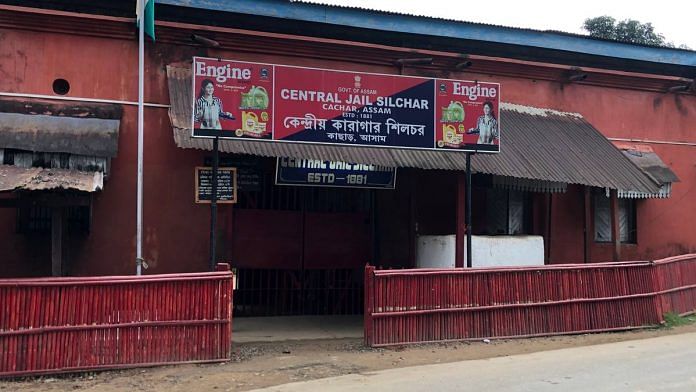New Delhi: About a year before the idea of detention centres became a part of the national political debate in India, images of children being separated from their families and being placed in makeshift detention centres at the US-Mexico border had caused significant global outrage.
In another part of the world, a slew of cables released in late-November revealed how the Chinese state runs a ruthless crackdown on the Muslim-Uyghur community at the detention centres in the province of Xinjiang.
While immigration detention centres have been around since 1892, they have emerged as a contentious topic since the 1980s. Various countries have been accused of running detention centres that feature prison-like conditions, lack welfare services for children and pregnant women, and deny basic legal assistance to the detainees.
ThePrint looks at what detention centres across the world look like, and some of the contentious issues related to them.
Also read: Modi govt sets norms for ‘model’ detention camps to ensure dignity of ‘illegal foreigners’
Origins of immigration detention centres
The origin of immigration detention centres can be traced back to 1892 — when the first such centre was established at Ellis Island in New Jersey.
The second one opened soon after in California in 1910, but it was only half a century later that detention centres would emerge as a major global phenomenon.
By the 1970s, Australia, the United Kingdom and France all had detention centres. And by the early 1980s, South Africa and Hong Kong built the first immigration detention centres in Africa and East Asia respectively.
While they started as a Western phenomenon, they soon became a tool for governments across the world. This was especially compounded after 1990, when globalisation led to more legal and illegal movement of labour across countries.
‘Denial of liberty’
At immigration centres, governments detain “non-citizens” using their administrative power, as opposed to the criminal laws of the country.
The usage of administrative powers over criminal law raises a particular issue. Because individuals detained are not covered by criminal law, they are often not guaranteed the legal rights given to ordinary prisoners.
“It is not formally a punishment, nor does it require a criminal conviction. Individuals are detained without charge or trial, and typically with a lower standard of legal safeguards than available to those subject to criminal law,” write scholars Martina Tazzioli and Glenda Garelli.
“The defining feature of immigration detention, however, is the denial of liberty,” they add.
According to Jackie Stephens of the Northwest University, what makes matters worse is that in the US, for example, the immigration detention centres are designed as temporary facilities. So, they often lack the necessary infrastructure required for long-term provision of basic facilities.
While the detainees are expected to stay there for only short periods, in practice, many of them end up staying for years.
Also read: Donald Trump becomes third US President to be impeached by House of Representatives
Immigration detention a problem in liberal democracies
While liberal democracies are known for strictly guarding individual rights and freedoms, they do not mete out the same treatment to detained “non-citizens”. According to international humanitarian groups, this problem becomes more profound when one looks at individual countries.
United States: In recent times, under President Donald Trump, the US has faced a lot of global criticism for the state of its immigration detention centres.
According to a report in Time magazine, the US detention centres held adults and children for months without any access to even soap or toothpaste. Some children had to sleep on the floors while over 1,000 people were crammed into spaces that were designed to house only 125. Adults had to stand for days due to lack of space. Infants were exposed to extremely cold temperatures and had to drink from unwashed bottles.
Canada and Germany: Just north of the US, Canada, which is perceived as the one of the most significant symbols of upholding multiculturalism and liberal ideas, has a shoddy track-record when it comes to detention centres.
“One third of immigration detainees are still held in prisons, including individuals with mental health conditions… Canada is one of only a handful of countries with a mandatory detention policy, which includes detention for up to 12 months with no judicial review,” notes a report by the Global Detention Project.
Similarly, in Germany, which is regarded as the ideal case when it comes to treatment of refugees owing to its acceptance of one million Syrian migrants, used to incarcerate immigration detainees in its prisons until 2014.
Australia: Often considered the most liberal regime in the Asia-Pacific, Australia has developed some of the most innovative techniques to ensure the least amount of individual rights to immigration detainees.
Australia maintains offshore immigration detention centres on the island of Manus, which belongs to Papua New Guinea and Nauru, to ensure that Australia’s legal protections don’t apply there. But even when it comes to on-shore centres, Australia has come under severe global criticism.
A Human Rights Commission report in June noted that “unlike any other liberal democracy”, Australia’s immigration detention system is becoming “more and more like a prison”.
“It is also now holding people for an average of about 500 days — far longer than any comparable jurisdiction, and is increasingly using restraints,” noted a report in The Guardian.
Also read: 4 key takeaways from Boris Johnson’s landmark victory in UK elections



